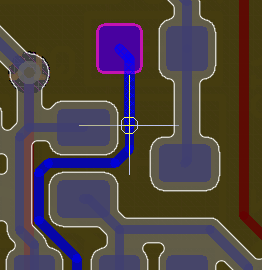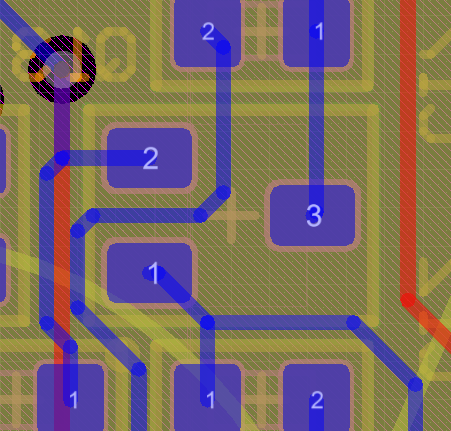I'm designing a board that (among other things) elevate 3V3-I2C signals to 5V. The picture below shows one of the 2 BSS138 used for this task. It is connected to SDA-3V (topleft), SDA-5V (bottom) and 3V3 power (right), as shown.
Due to the board configuration around this BSS138, I have to make the 3V3 track cross the BSS138.
I have two options: the first one (shown on the left) uses a narrowed track to go between BSS138 pads; all happens on the PCB front side. The second option (show on the right) uses two vias to make the connection through a track on the PCB back side.
Note that the full board has a ground plane on back side (not represented here), and thus the second option's track tears through this ground plane.
Could you provide some insight about which option is the better, and why?



